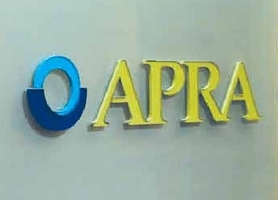APRA responds on covered views upon APS 121 release
The Australian Prudential Regulatory Authority has finalised a Prudential Standard governing covered bond issuance and today (Thursday) in a response to consultation submissions set out its thinking on matters such as cover pool disclosure and asset identification and selection.
 The regulatory authority launched a consultation on a draft prudential standard, Prudential Standard APS 121 (APS 121), in November last year, after the Australian government one month earlier amended the country’s banking act to allow authorised-deposit taking institutions (ADIs) to issue covered bonds.
The regulatory authority launched a consultation on a draft prudential standard, Prudential Standard APS 121 (APS 121), in November last year, after the Australian government one month earlier amended the country’s banking act to allow authorised-deposit taking institutions (ADIs) to issue covered bonds.
Nine written submissions were filed with APRA in response to the consultation on APS 121, according to the regulator, generally focussing on common themes including asset identification, capital, and the requirement in draft APS 121 for asset registers.
“Other topics raised include the capital treatment of assets outside cover pools, cross-default, disclosure and collateral securing derivatives,” said APRA. “Some submissions sought clarification of requirements in draft APS 121 that they considered to be ambiguous.”
Issues were identified with 11 prudential requirements during the consultation, according to APRA: asset identification, risk weighting of assets outside the cover pool, default, publication of information about cover pools, liabilities between the ADI and the covered bond special purpose vehicle (SPV), return of assets outside the cover pool, an issuer’s right of pre-emption, selection of assets for cover pools, indexation clauses, assets not securing covered bond liabilities, and assets in Australia.
Changes made as a result of feedback to the draft APS 121 include:
- making optional the maintaining of a register of assets held by the covered bond SPV that do not form part of the cover pool or secure covered bond liabilities (a register of assets in the cover pool is mandatory);
- allowing clauses in covered bond documentation that would allow covered bondholders to make a claim on a covered bond SPV if it breaches its obligations under a covered bond;
- specifying that all assets outside a cover pool must be returned to the ADI within one month of a default of a covered bond (the draft specified that this should happen “immediately”); and
- adding a requirement that ADIs should “manage their covered bond programmes prudently and not transfer an excessive amount of assets to a covered bond SPV having regard to what is reasonably necessary for the efficient operation of that covered bond programme”.
In other respects APRA stuck to the draft prudential standard, for example by refraining from mandating publication of cover pool information.
It said that arguments for such a requirement “relate to the efficiency of the covered bond market and the security of covered bond investors, rather than depositors” and that the absence of such a requirement does not prevent an ADI from publishing such information if it chooses to do so or if this is how the market develops.
With respect to the matter of asset selection for cover pools, APRA set out its response to questions raised about whether cover pools must be a representative sample of the asset classes from which they are drawn.
It said that while an ADI may select assets for its cover pools as it considers appropriate, APRA expects ADIs to fully assess the risks associated with issuing covered bonds before transferring assets to a cover pool.
“This includes the risk that encumbering an ADI’s highest quality assets might undermine the confidence of unsecured creditors,” it said. “Accordingly, APS 121 requires an ADI to have policies and procedures to assess the effect of issuing a covered bond, including under stress conditions, on the ADI’s ability to raise other sources of funding and the cost of such funding.”
It also noted that any change in risk due to how an ADI selects assets for inclusion in its cover pool may be taken into account when determining an ADI’s prudential capital requirement.
APRA’s response paper and the final APS 121 can be found here.

